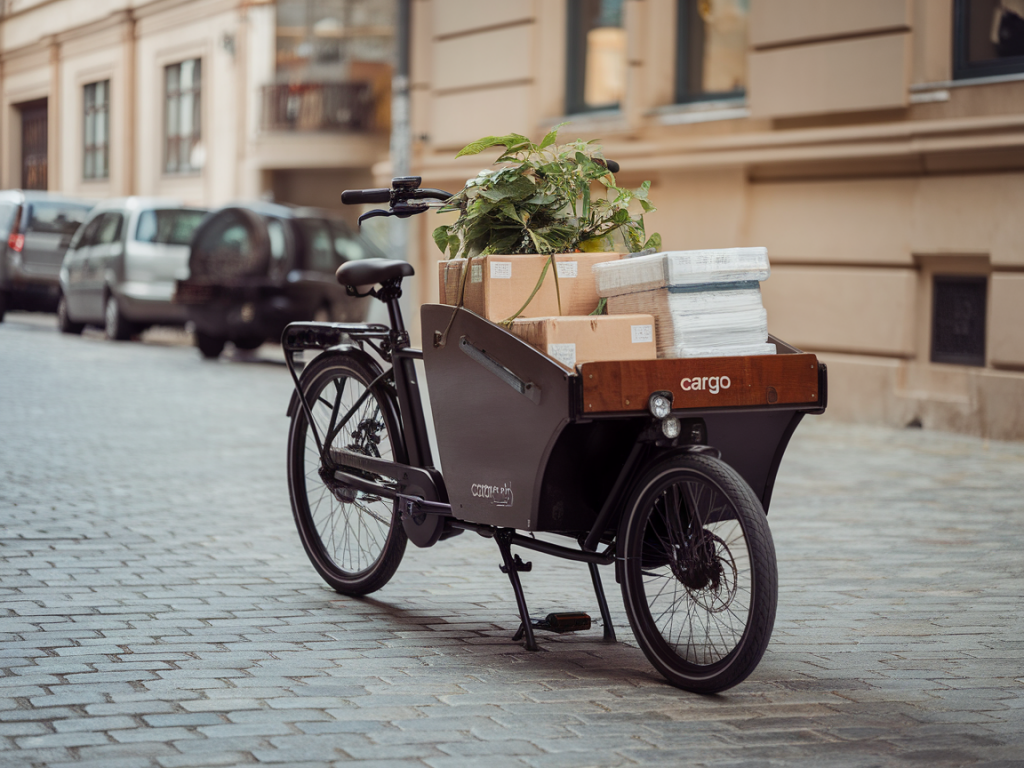
Over the past few years, I've observed a quiet but powerful revolution rolling through our cities — quite literally. While electric cars and autonomous shuttles often steal the spotlight, there’s one unsung hero of urban mobility that’s making a real, tangible impact on the ground: cargo e-bikes. These electric pedal-assisted cycles are becoming a game-changer in the way goods are delivered in dense urban environments, and I truly believe they are one of the most promising solutions for sustainable last-mile logistics.
Why Cities Need a Rethink of Urban Deliveries
As our cities become more populated and e-commerce continues to surge, the strain on urban logistics has become a pressing issue. More delivery vans and trucks mean more congestion, noise, and pollution. In many historic European city centers — where narrow streets were never designed for modern vehicles — this challenge becomes even more acute. Traditional delivery models are simply not keeping up with the demands of modern urban life, especially when sustainability goals are on the line.
This is where cargo e-bikes enter the picture. They make it possible to navigate traffic-clogged areas, access pedestrian-only zones, and drastically cut emissions — all while delivering packages more efficiently. For me, watching urban logistics companies embrace these bikes is one of the more exciting transformations I’ve seen in the sustainable mobility space lately.
What Exactly Is a Cargo E-Bike?
At its core, a cargo e-bike is a bicycle equipped with an electric motor to assist the rider’s pedaling and a specially designed frame that supports heavy or bulky loads. These bikes come in a variety of styles, from two-wheelers with extended frames to three-wheelers with cargo boxes mounted in front or back. Some high-capacity versions can carry over 200 kg (about 440 lbs) and cover up to 100 km (62 miles) on a single charge.
There are some great examples out there — the Urban Arrow, Tern GSD, and Riese & Müller Load, just to name a few. These bikes combine smart design with powerful assisted drive systems, allowing couriers and businesses to navigate tight spaces quickly without breaking a sweat.
The Benefits Are Real — And Measurable
Using cargo e-bikes for last-mile delivery isn’t just a nice idea; it’s a proven way to boost efficiency and reduce environmental impact. In fact, a study by the European Cyclists’ Federation found that e-cargo bikes can perform up to 60% of urban delivery jobs faster than vans. That statistic alone is striking — but there’s more:
- Lower Emissions: E-bikes produce zero tailpipe emissions, which helps cities meet climate targets and improve air quality.
- Reduced Traffic Congestion: With a smaller footprint than vans, they take up less space and often avoid peak-hour traffic jams.
- Cost Efficiency: The operating costs — maintenance, fuel, parking — are far lower than their four-wheeled counterparts.
- Improved Delivery Times: Especially in urban cores, e-bikes can often complete deliveries faster and more reliably.
In my own neighbourhood in Paris, I’ve seen how these bikes have transformed same-day delivery. Companies like DHL and UPS are running pilot programs using cargo e-bikes, and the results so far have been very encouraging. Local courier startups like B-Moville and Urb-it are also thriving thanks to their eco-conscious business models built around cargo cycling.
Policy Support Is Making a Difference
No revolution happens in a vacuum. One big reason cargo e-bikes are becoming viable at scale is the increasing support from city governments. Many European cities, including Amsterdam, Paris, and Berlin, are investing in cycling infrastructure and offering subsidies for businesses that adopt cargo e-bikes.
In London, for instance, the borough of Hackney launched a scheme offering grants of up to £1,000 for local businesses to purchase or lease cargo bikes. France has gone even further, with the government recently announcing nationwide incentives of up to €2,000 for individuals and businesses purchasing electric cargo bikes. This kind of support not only encourages early adoption but also signals that clean logistics is a public priority.
Use Cases That Go Beyond Deliveries
While deliveries dominate the conversation, I believe cargo e-bikes have the potential for much more diversified use. Urban tradespeople — like plumbers, electricians, and repair technicians — are starting to realize the benefits of swapping their vans for e-bikes. Municipal services are also coming on board: waste collection, park maintenance, and even mobile libraries have found creative applications for electric cargo bikes in several cities across Europe.
One of my favorite examples is from Copenhagen, where the city has fleet-tested e-bikes for garbage collection in smaller residential areas. Not only has this reduced emissions, but it's also made bulky municipal vehicles less necessary in community spaces where they can be intrusive.
The Obstacles We Still Need to Overcome
Of course, it’s not all smooth cycling. Despite all the momentum, several challenges remain. For starters, cargo e-bikes are still relatively expensive compared to conventional bikes, especially for small businesses. Infrastructure is another limiting factor — many cities still lack the protected bike lanes or secure parking spaces that would make daily use of cargo bikes much safer and more appealing.
Weather can also be a deterrent, particularly in parts of the world that experience heavy rain or snow. However, companies are already innovating with weatherproof cargo boxes and even heated rider cabins — a development I find both practical and exciting.
Perhaps most importantly, public awareness and confidence need a boost. Many people, including business owners, simply don’t know how capable today’s cargo e-bikes really are. Bringing them into the mainstream will take time, storytelling, and more robust demonstration projects — something we at Mobility News are passionate about advancing.
So, Are Cargo E-Bikes the Future?
In many ways, they already are. As cities grow and demand for sustainable logistics increases, cargo e-bikes provide a ready-made solution that is efficient, affordable, and environmentally friendly. Their scalability, adaptability, and human-sized footprint make them ideally suited for rethinking how we move goods through our shared spaces.
For those of us who care deeply about clean mobility and livable cities, cargo e-bikes represent more than just a clever innovation — they’re a critical part of an urgent shift. And from what I’m seeing around the globe, this shift is moving faster than most people realize — one quietly powerful pedal at a time.

